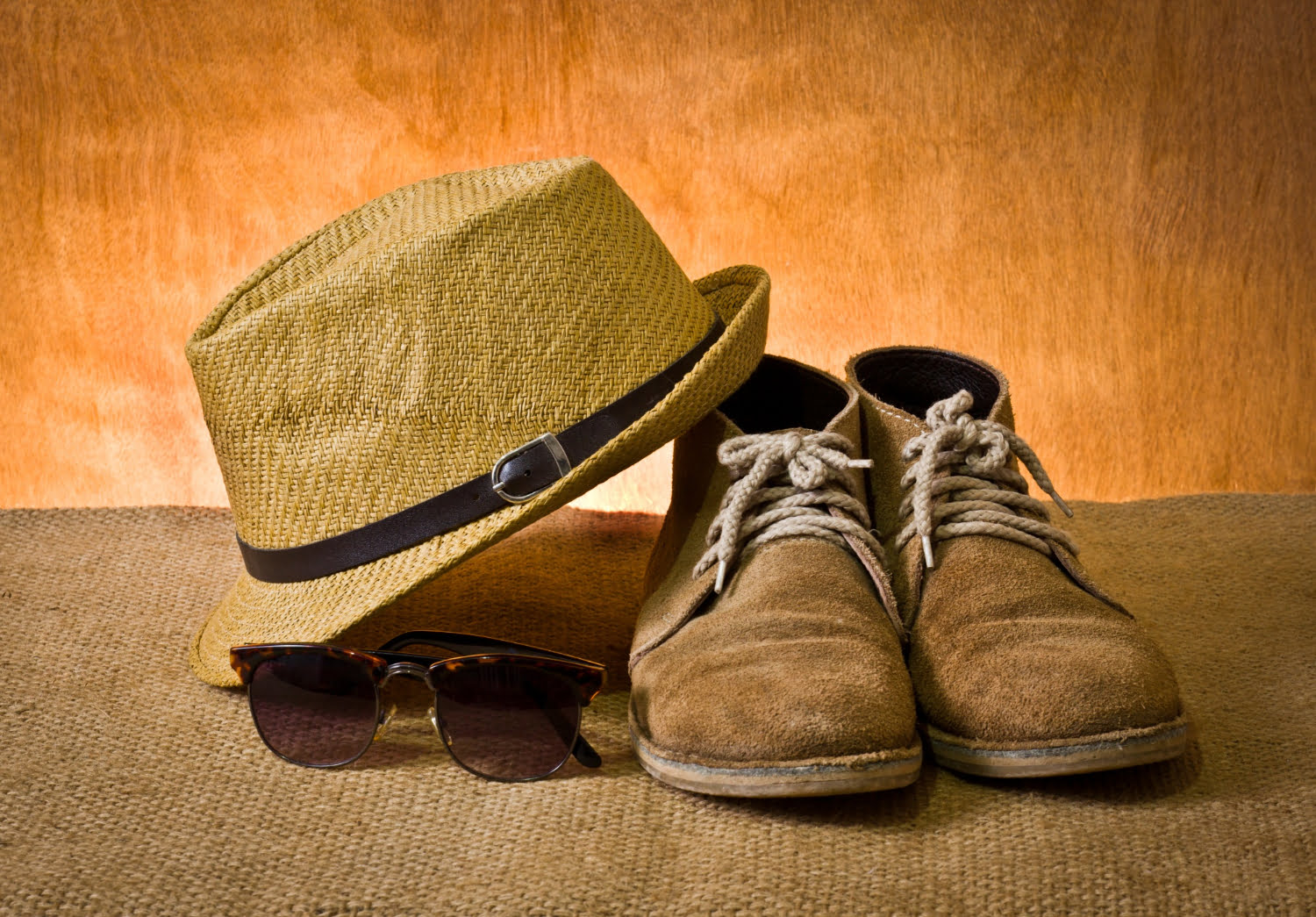Are shoes clothing? Clothing is more than just fabric draped over the body; it’s a means of expression, protection, and cultural identity. It encompasses garments and accessories worn to cover and adorn the body. Shoes, despite being located at the feet, are undeniably part of this definition. They serve to protect the feet, provide support, and enhance the overall appearance of an outfit.
The Role of Shoes in Clothing
Functional Aspect
Shoes are designed with practicality in mind. They offer protection from environmental elements, preventing injuries and discomfort during movement. Whether it’s walking, running, or engaging in sports, the right pair of shoes can make all the difference. Athletic shoes, for example, are engineered with features like cushioning, traction, and stability to support specific activities.
Fashion and Style
Beyond functionality, shoes are integral to fashion and style. They can elevate an outfit, adding flair and personality. The choice of footwear can transform a casual ensemble into a polished look or make a bold statement with avant-garde designs. Fashion designers often use shoes as focal points in their collections, showcasing innovative designs and materials.
Historical Significance
Throughout history, shoes have held symbolic and cultural significance. In ancient civilizations, footwear was a status symbol, with elaborate designs reserved for the elite. The evolution of shoes mirrors changes in society, technology, and fashion trends. From the simplicity of early sandals to the intricacy of modern-day sneakers, shoes have evolved to reflect cultural values and aesthetic preferences.
Types of Shoes
Athletic Shoes
Are shoes clothing? Athletic shoes are designed for performance and comfort during physical activities. They come in various styles tailored to specific sports, such as running shoes with cushioned soles for impact absorption or basketball sneakers with ankle support for agility.
Casual Shoes
Casual shoes offer versatility and comfort for everyday wear. Sneakers, loafers, and sandals are popular choices, providing a balance between style and functionality. Casual shoes come in a range of materials and designs to suit different preferences and occasions.
Formal Shoes
Formal shoes are reserved for special occasions and professional settings. Classic styles like oxfords, brogues, and heels are crafted from premium materials like leather and suede. These shoes are characterized by their sleek and sophisticated designs, making them ideal for formal events and business attire.
Specialty Shoes – Are Shoes Clothing
Specialty shoes cater to specific needs or activities. Examples include hiking boots for outdoor adventures, safety boots for construction work, and dance shoes for performers. These shoes are engineered with features tailored to the demands of their respective activities, ensuring comfort and safety.
Evolution of Shoes as Fashion Accessories
Shoes have transcended their functional role to become fashion accessories. From the iconic red soles of Christian Louboutin heels to the street-style appeal of Nike sneakers, shoes are coveted for their aesthetic appeal and brand status. Fashion-forward individuals often invest in designer shoes to make a statement or complete their look.
Cultural Significance of Shoes
In many cultures, shoes carry symbolic meanings and traditions. For example, in some Asian cultures, it’s customary to remove shoes before entering a home as a sign of respect and cleanliness. In Western societies, shoes are often associated with status and fashion, reflecting individual tastes and social norms.
Importance of Choosing the Right Shoes
Are shoes clothing: Selecting the right shoes is essential for comfort, performance, and style. Ill-fitting shoes can lead to discomfort, blisters, and even injuries, while the right pair can enhance posture, confidence, and overall well-being. Factors to consider when choosing shoes include fit, support, cushioning, and intended use.
Impact of Shoes on Outfit Perception
Shoes play a crucial role in shaping how an outfit is perceived. The choice of footwear can elevate a simple outfit or detract from its overall appeal. Whether it’s a sleek pair of heels for a formal event or stylish sneakers for a casual outing, shoes contribute to the overall aesthetic and impression of an ensemble.
Shoes and Personal Expression
For many individuals, shoes are more than just functional items; they’re a form of self-expression. The styles, colors, and brands chosen reflect personal tastes, interests, and lifestyle choices. Sneaker culture, for example, has its own subculture and community, with enthusiasts collecting rare and limited-edition releases as a form of self-expression and identity.
The Psychological Connection Between Shoes and Identity
Psychologically, shoes hold significant meaning and symbolism. They can evoke memories, emotions, and aspirations, serving as tangible symbols of identity, status, and belonging. Research suggests that people often make assumptions about others based on their choice of footwear, highlighting the psychological impact of shoes on perception and identity.
Common Shoe Myths Debunked
Despite their ubiquity, shoes are often surrounded by myths and misconceptions that can influence consumer choices and perceptions. Let’s explore and debunk some of the most common misconceptions about shoes:
- Expensive Shoes Are Always Better: While it’s tempting to believe that higher-priced shoes equate to better quality, this isn’t always the case. Price doesn’t necessarily guarantee comfort, durability, or functionality. Factors such as brand reputation, materials used, and design influence the overall quality of shoes, rather than just the price tag.
- High Heels Are Inherently Uncomfortable: While poorly designed or ill-fitting high heels can indeed be uncomfortable, it’s a misconception to assume that all heels are painful to wear. With proper fit, cushioning, and support, high heels can be surprisingly comfortable, even for extended periods. Additionally, advancements in shoe technology and design have led to more ergonomic and supportive heel options.
- Breaking in Shoes Is Necessary: Many people believe that new shoes need to be “broken in” before they become comfortable to wear. However, this isn’t always true. While some shoes may initially feel stiff or snug, forcing yourself to endure discomfort can lead to blisters, foot pain, and even long-term foot problems. It’s essential to prioritize comfort and fit from the start and choose shoes that feel comfortable right away.
- Flip-Flops Are Healthy Footwear: While flip-flops are convenient for casual wear, they’re not the most supportive or protective footwear option. Flip-flops offer minimal arch support and cushioning, which can lead to foot fatigue, strain, and even injuries with prolonged use. They’re best reserved for short-term wear, such as trips to the beach or pool, rather than everyday use.
Eco-Friendly Shoe Options
Are shoes clothing: As environmental concerns continue to rise, the fashion industry is facing increasing pressure to adopt more sustainable and eco-friendly practices. This includes the production of footwear, where brands are exploring innovative materials and manufacturing processes to reduce their environmental impact. Here are some eco-friendly shoe options that are gaining popularity:
- Recycled Materials: Many shoe brands are incorporating recycled materials into their designs, such as recycled plastic bottles, rubber, and textiles. By repurposing materials that would otherwise end up in landfills, these shoes help reduce waste and minimize the demand for virgin resources.
- Vegan Leather: Traditional leather production is resource-intensive and often involves environmental degradation and animal welfare concerns. Vegan leather, made from plant-based materials like polyurethane or pineapple leaves, offers a cruelty-free alternative without sacrificing style or quality.
- Sustainable Fabrics: Some shoe brands are opting for sustainable fabrics like organic cotton, hemp, and bamboo, which require fewer pesticides, water, and energy to produce compared to conventional materials. These fabrics are biodegradable and have a lower environmental footprint throughout their lifecycle.
- Ethical Manufacturing: In addition to using eco-friendly materials, ethical manufacturing practices are essential for reducing the environmental impact of shoes. This includes fair labor practices, safe working conditions, and minimizing energy consumption and waste in the production process.
Conclusion
In conclusion, the debate over whether shoes are considered clothing goes beyond semantics, touching on themes of function, fashion, and cultural significance. Shoes play a vital role in protecting and adorning the feet while serving as symbols of style, status, and identity. From their practical functions to their impact on personal expression and perception, shoes occupy a unique space in the world of attire and self-expression.
As consumers, it’s essential to debunk common shoe myths and prioritize comfort, fit, and functionality when selecting footwear. Additionally, embracing eco-friendly shoe options can help reduce the environmental impact of our fashion choices and support sustainable practices in the industry.
Frequently Asked Questions
Q: Are shoes considered clothing?
A: Yes, shoes are classified as clothing due to their role in attire and fashion.
Q: What are the different types of shoes?
A: There are various types of shoes, including athletic shoes, casual shoes, formal shoes, and specialty shoes.
Q: Why is choosing the right pair of shoes important?
A: Selecting the right shoes is essential for comfort, style, and overall well-being.
Q: What is the cultural significance of shoes?
A: Shoes hold cultural meanings and traditions in many societies, reflecting social norms and values.
Q: How do shoes contribute to personal expression?
A: Shoes serve as a form of self-expression, allowing individuals to showcase their personalities and identities through footwear choices.
Explore Additional Content: How to Get Gas Smell Out of Clothes



